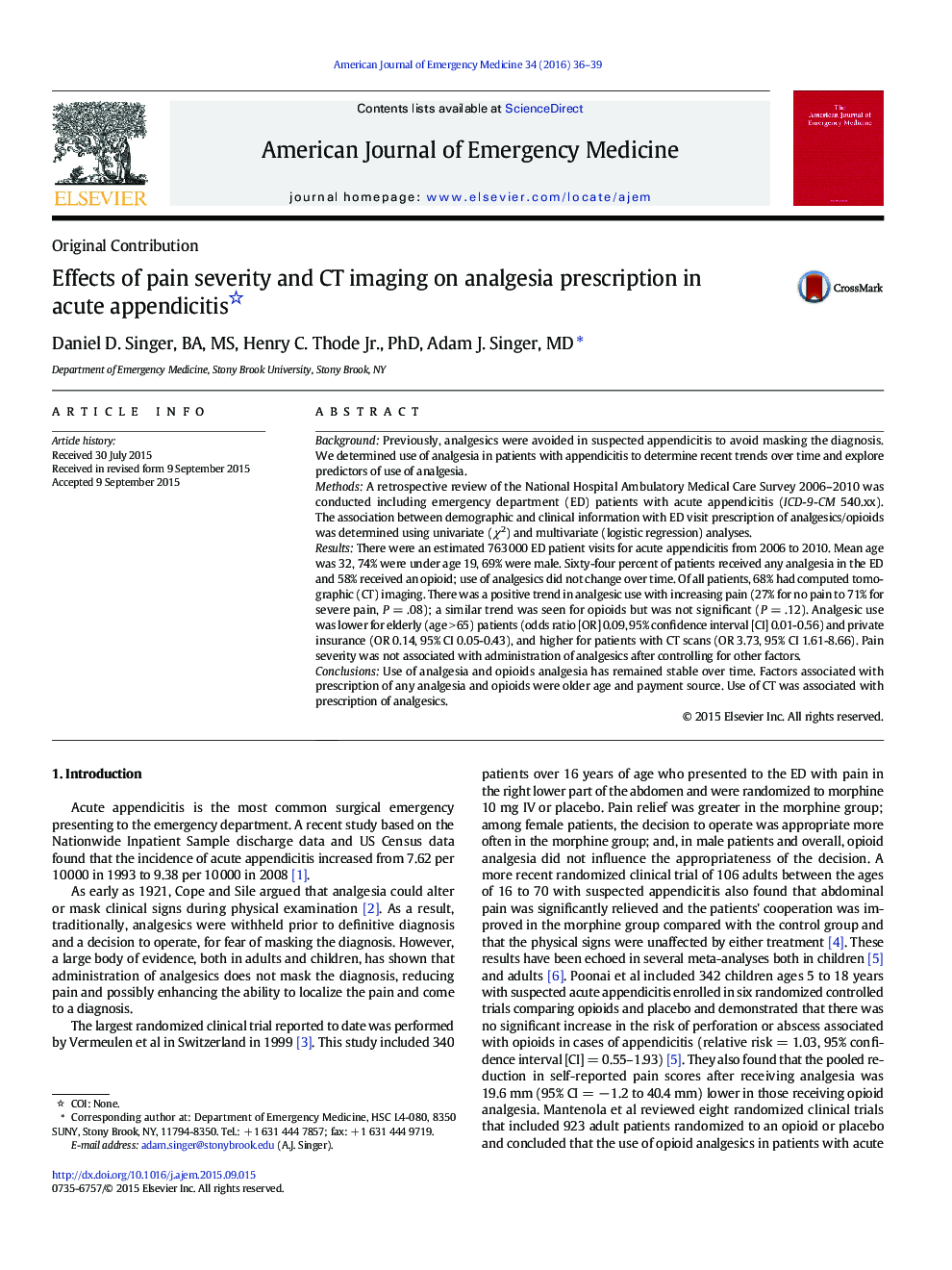| Article ID | Journal | Published Year | Pages | File Type |
|---|---|---|---|---|
| 3223414 | The American Journal of Emergency Medicine | 2016 | 4 Pages |
BackgroundPreviously, analgesics were avoided in suspected appendicitis to avoid masking the diagnosis. We determined use of analgesia in patients with appendicitis to determine recent trends over time and explore predictors of use of analgesia.MethodsA retrospective review of the National Hospital Ambulatory Medical Care Survey 2006–2010 was conducted including emergency department (ED) patients with acute appendicitis (ICD-9-CM 540.xx). The association between demographic and clinical information with ED visit prescription of analgesics/opioids was determined using univariate (χ2) and multivariate (logistic regression) analyses.ResultsThere were an estimated 763 000 ED patient visits for acute appendicitis from 2006 to 2010. Mean age was 32, 74% were under age 19, 69% were male. Sixty-four percent of patients received any analgesia in the ED and 58% received an opioid; use of analgesics did not change over time. Of all patients, 68% had computed tomographic (CT) imaging. There was a positive trend in analgesic use with increasing pain (27% for no pain to 71% for severe pain, P = .08); a similar trend was seen for opioids but was not significant (P = .12). Analgesic use was lower for elderly (age > 65) patients (odds ratio [OR] 0.09, 95% confidence interval [CI] 0.01-0.56) and private insurance (OR 0.14, 95% CI 0.05-0.43), and higher for patients with CT scans (OR 3.73, 95% CI 1.61-8.66). Pain severity was not associated with administration of analgesics after controlling for other factors.ConclusionsUse of analgesia and opioids analgesia has remained stable over time. Factors associated with prescription of any analgesia and opioids were older age and payment source. Use of CT was associated with prescription of analgesics.
